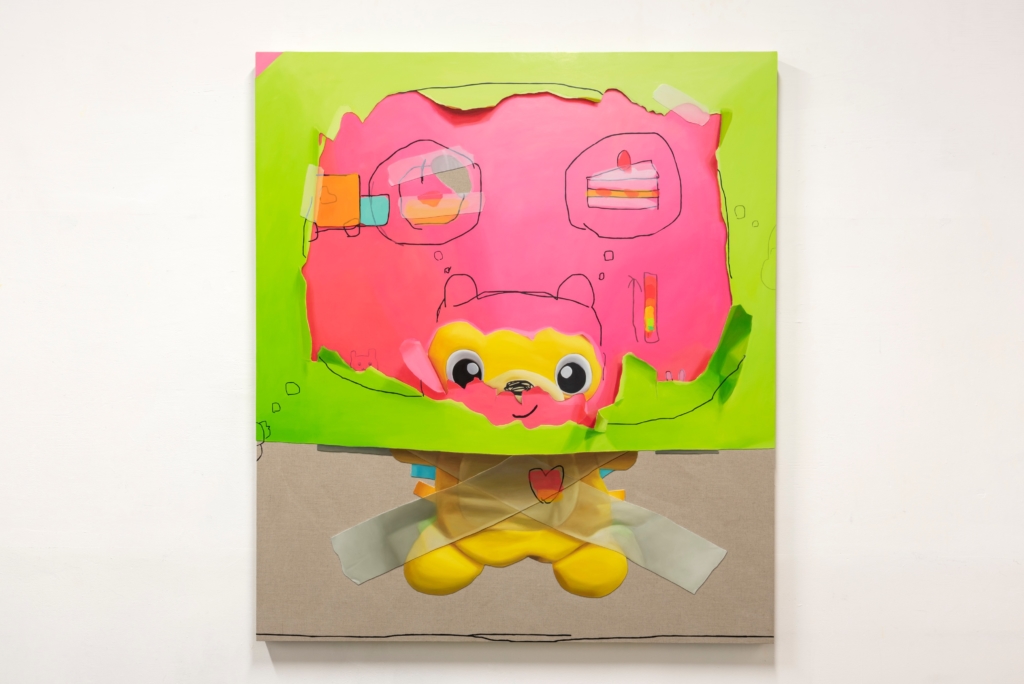Past
NUZU
Tomohiro Takahashi
Jul 4 (Tue.) - Aug 5 (Sat.), 2023
MAHO KUBOTA GALLERY is pleased to present Tomohiro Takahashi’s solo exhibition ‘NUZU’ from 4 July.
The 26-year-old Takahashi, who has a studio in Kyoto, has a growing reputation among young painters in Japan for his very distinctive practice.
This exhibition will mark Takahashi’s first solo exhibition in Tokyo. The exhibition will feature over ten new paintings by Takahashi.
Takahashi keeps a large collection of stuffed toy dolls and plastic toys in his studio, and when beginning the creation of a piece, the artist chooses one or two of these toys to serve as the lead actor for each painting. Using vibrant colored paper prepared in the studio, a simple backdrop resembling a stage for scripts is created, and the previously chosen toys are positioned as if placing actors on a stage. Takahashi faithfully depicts these scenes resembling theatrical spaces in his paintings. Additionally, meticulously drawn lines resembling children’s doodles are carefully added to the canvas. Many of these “doodles” take the form of speech bubbles found in comics, allowing us to imagine the thoughts and inner voices of the toys, evoking a realm of subtle communication and infusing the artworks with a sense of life.
The artist explains the reason for placing stuffed animals as the central presence in his paintings as follows: “Even if I can’t convey things well in my own words, there are times when communication can be established through the intervention of toys.”
In fact, since around the age of four, Takahashi has been using a stuffed animal named “NUZU” as a medium to communicate with his family on a daily basis, and this has continued up to the present, even while living apart from the family.
By pouring their heartfelt thoughts into tangible “objects” without relying heavily on words, they communicate through these “objects.” This Japanese style of communication, which is represented by ordinary toys, symbolizes the slightly distorted and awkward relationships between people that have evolved uniquely in its society. Additionally, the psychological aspect of animism, where life and intention are perceived in normally lifeless “objects” or toys, and considering them as special and precious entities, is strongly reflected in Takahashi’s artistic world.
Born in the mid 1990s, Takahashi is of a generation whose formative influences include the plastic toys that are now seen as old-fashioned, the animist belief that all objects have spirits, distinctive Japanese storytelling formats rooted in bunraku puppetry, dramaturgy and hints at the presence of spirits in worlds such as those of Studio Ghibli animation, Simulationism in the art of the 1990s, and Takashi Murakami’s Superflat concept of the 2000s. These disparate elements all blend together and suddenly emerge in Takahashi’s paintings, which give the sense of a complex worldview consisting of nested layers, including problems with dis-communication and a disquieting air that cannot be ascribed to “kawaii” cuteness alone. As a whole, this striking exhibition creates an impression dominated by the implication of an unintelligible future concealed behind a colorful and playful surface.
















